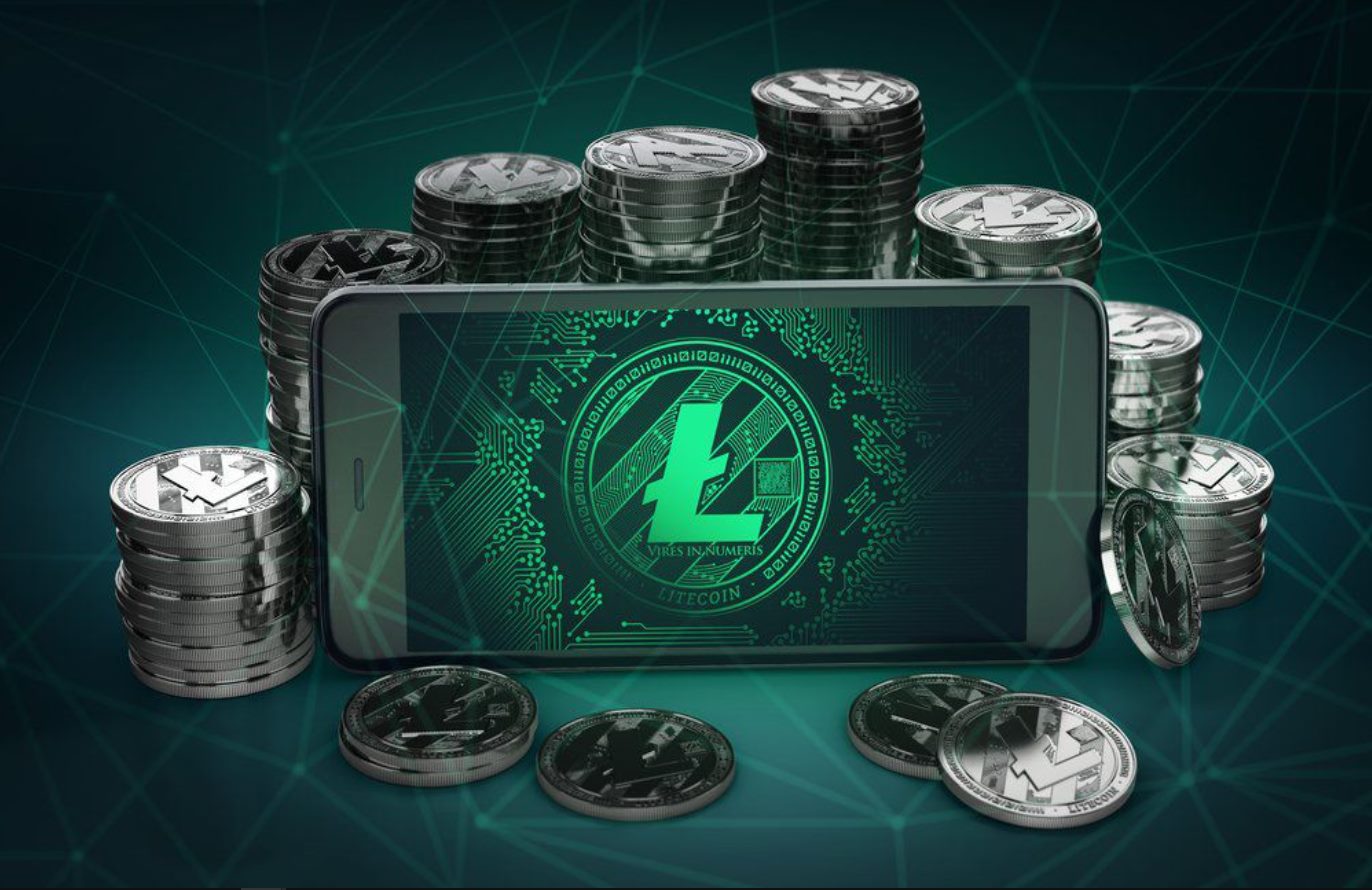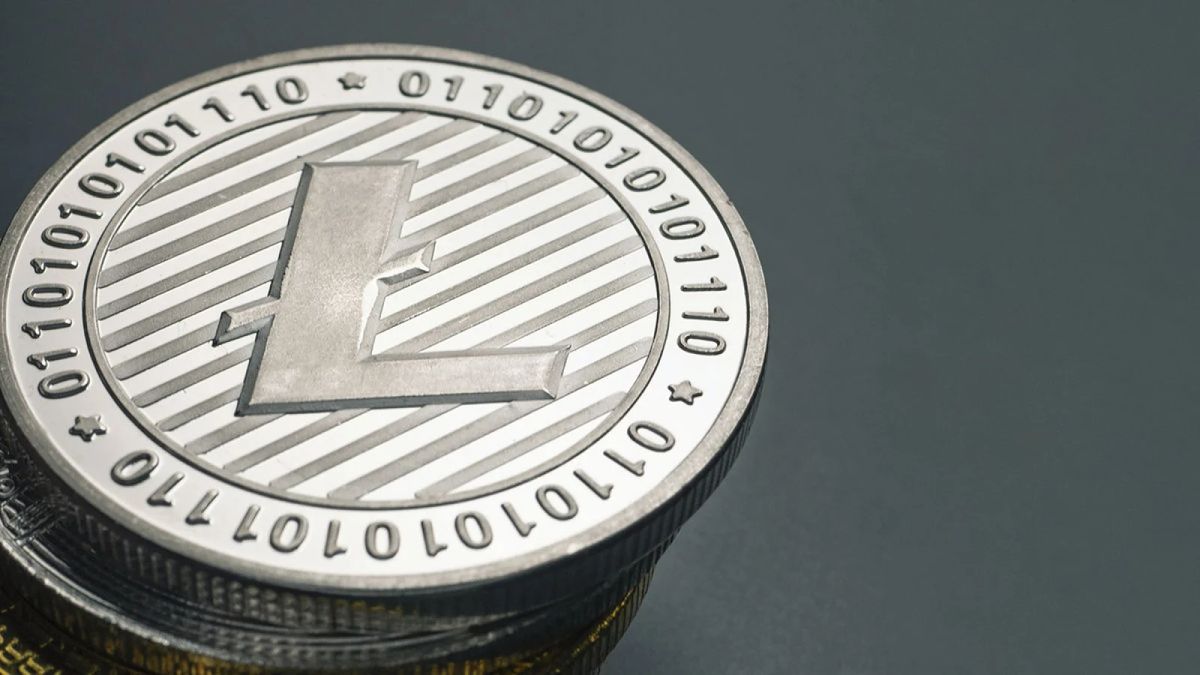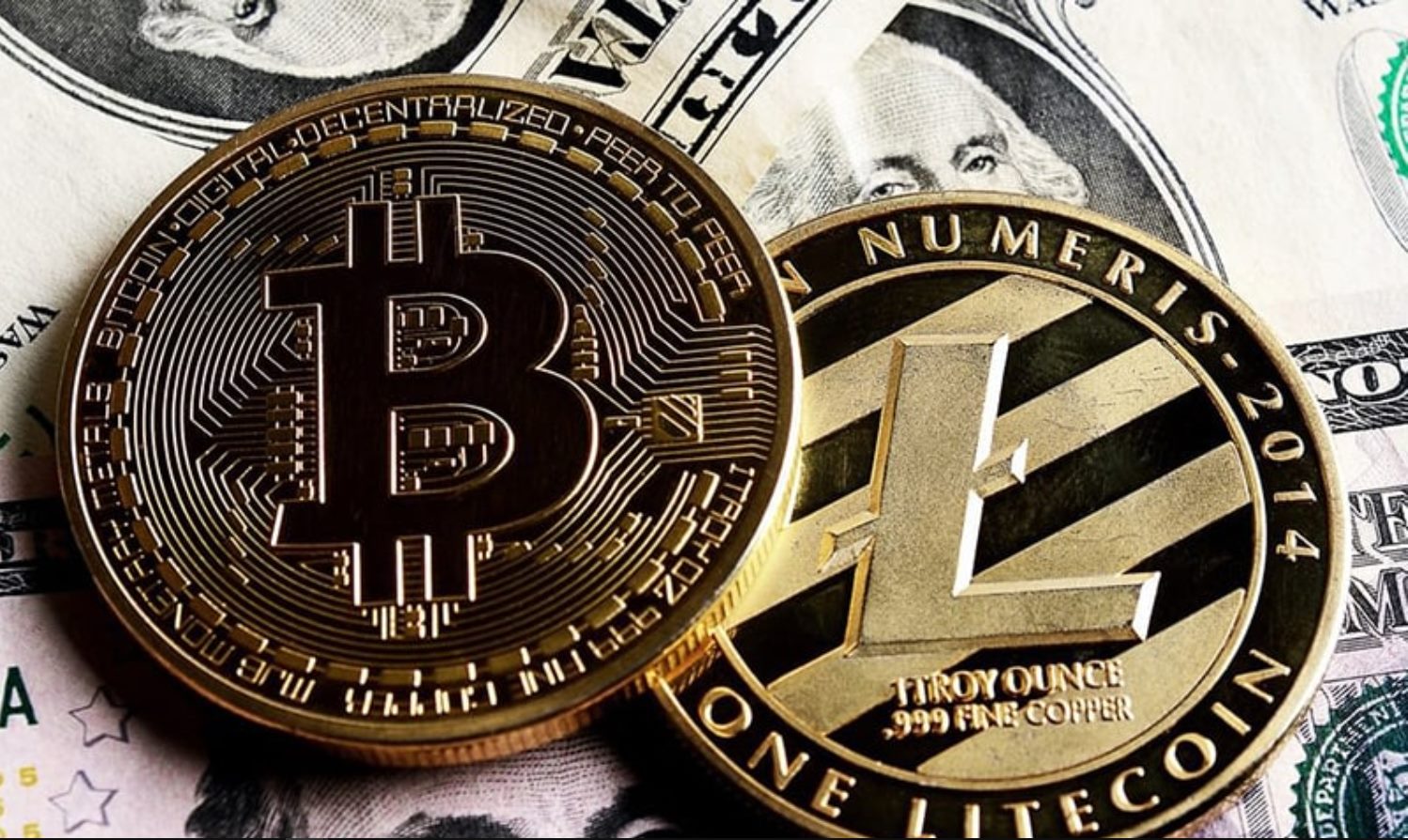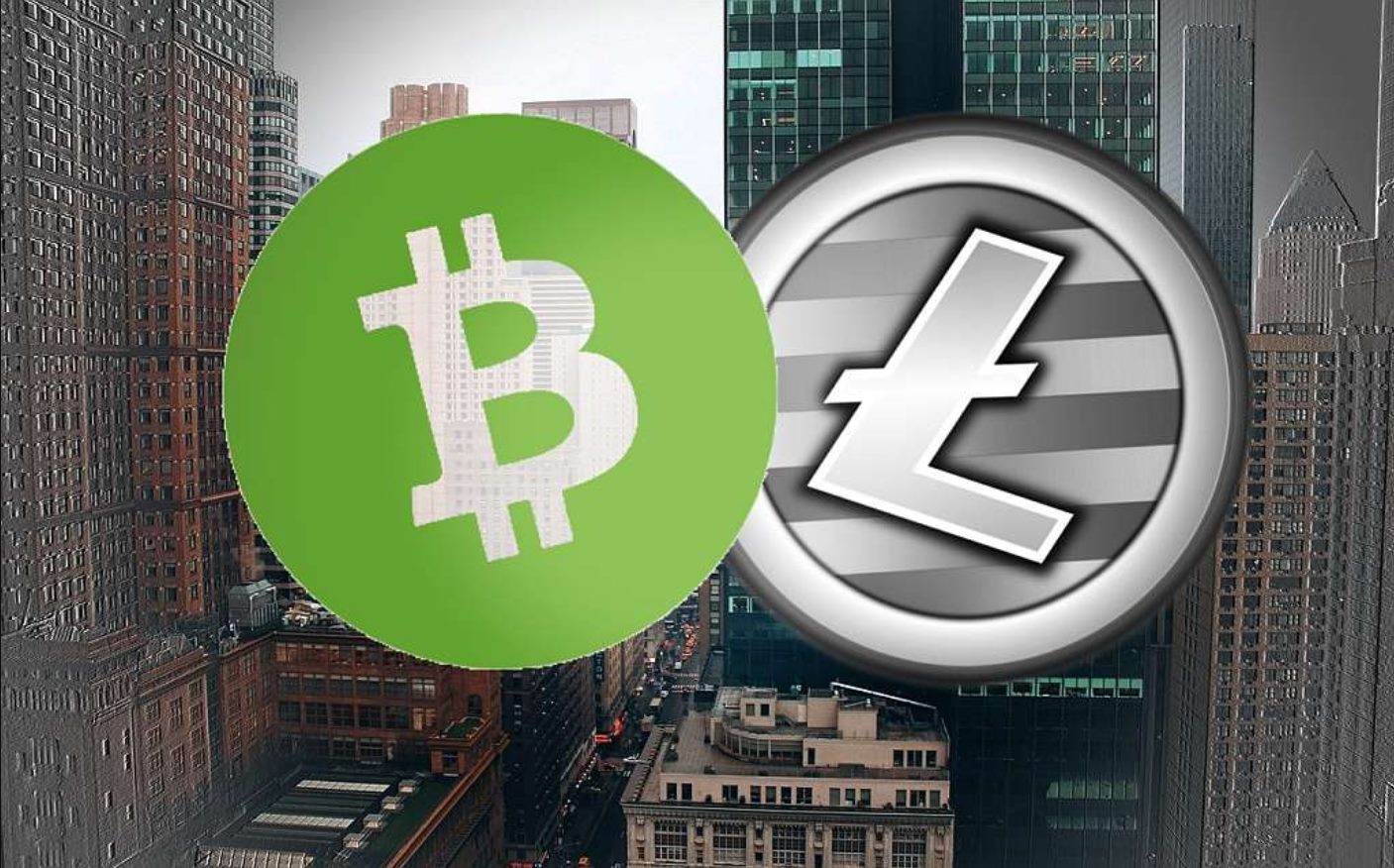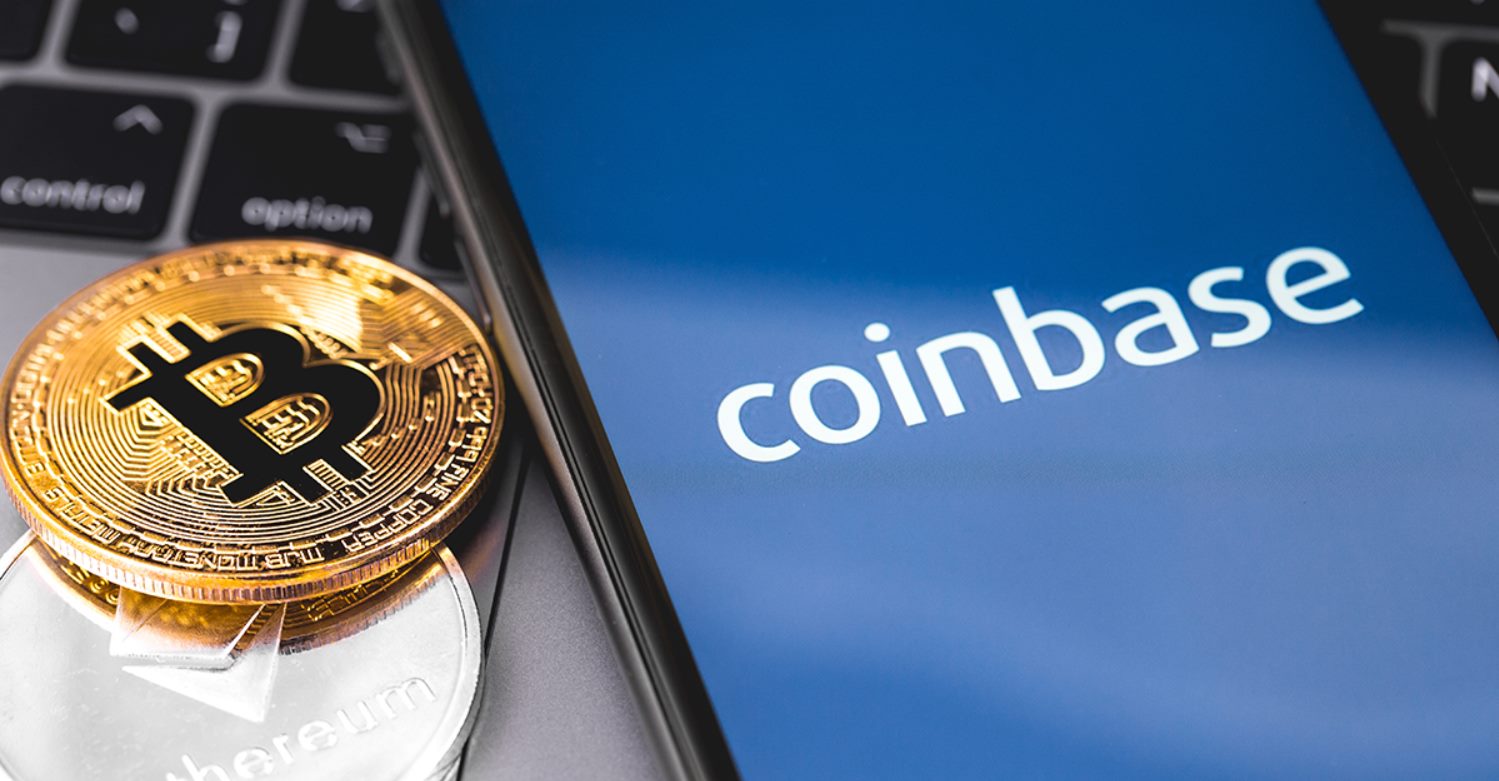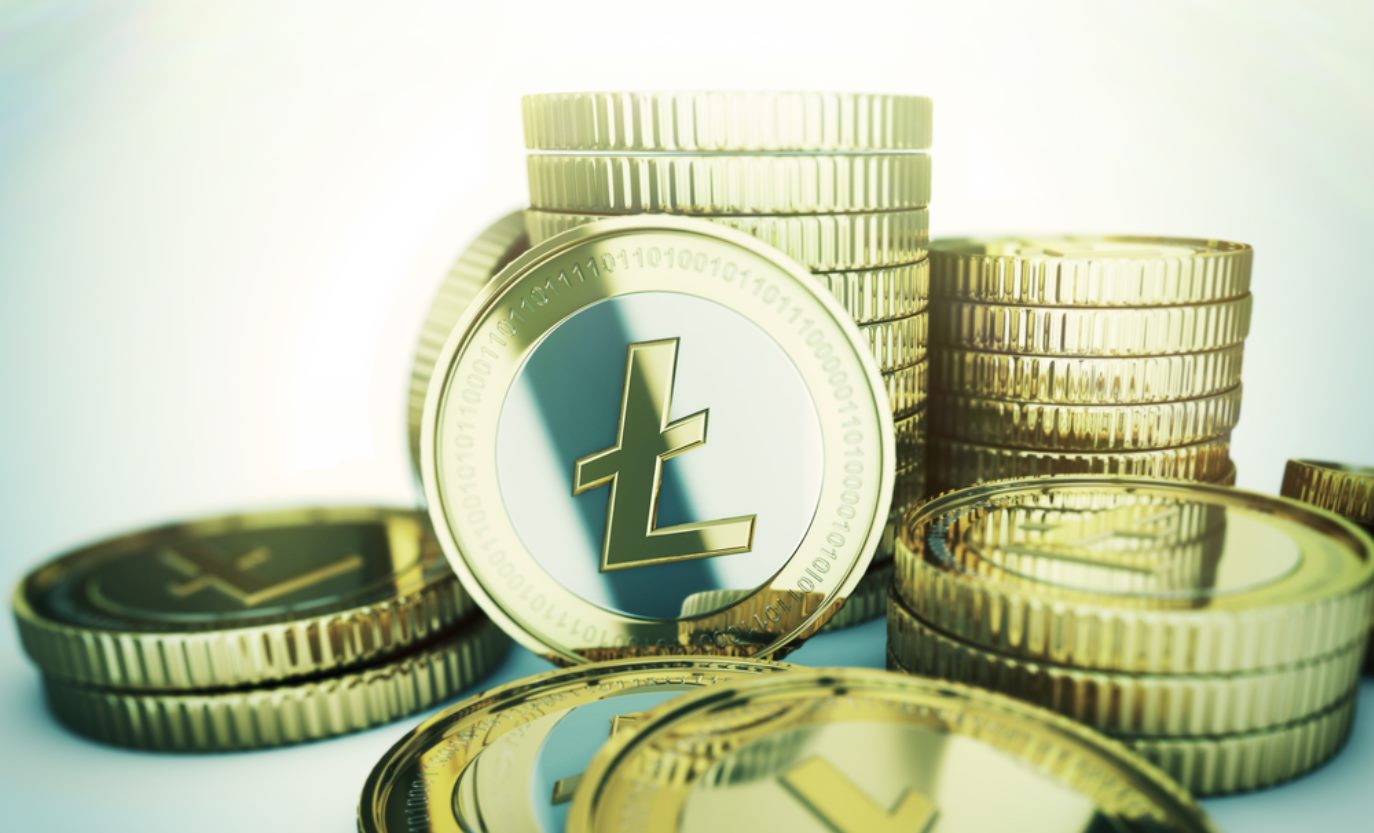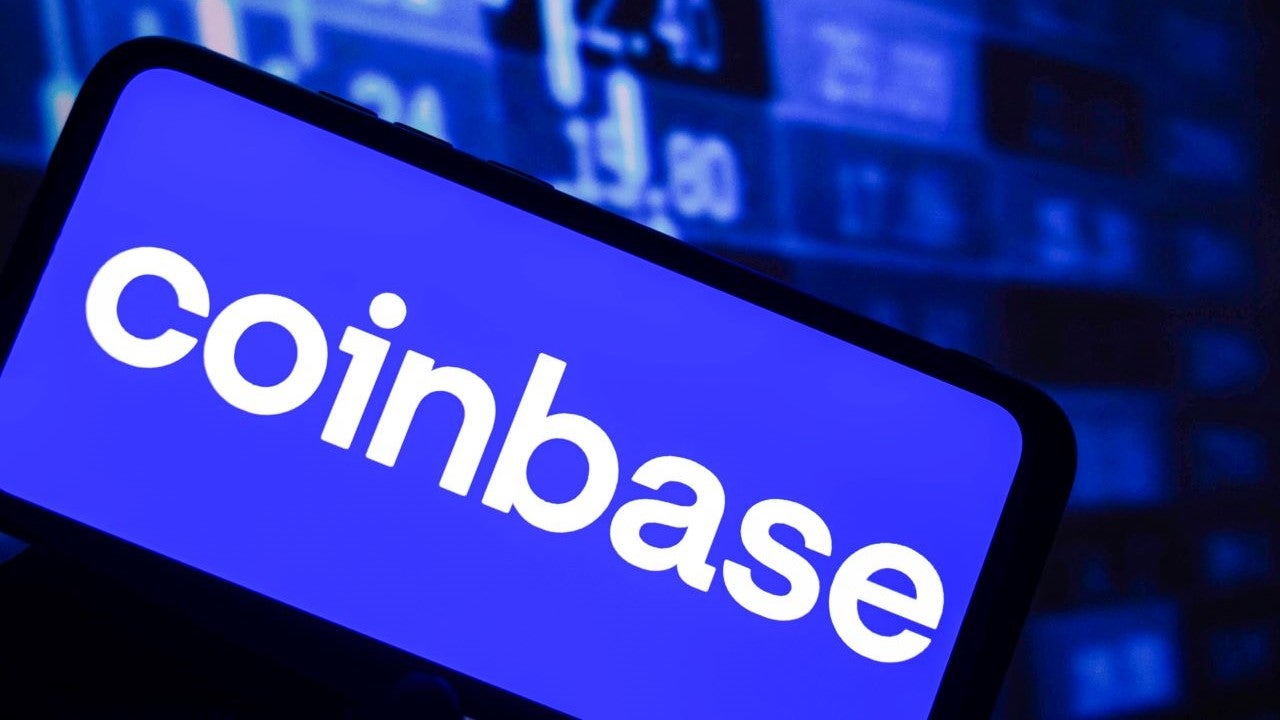Introduction
Welcome to the world of cryptocurrency trading! In this article, we will explore the exciting world of Litecoin trading and how you can get started. If you’re new to the concept of cryptocurrencies, don’t worry – we’ll cover all the essentials to help you navigate this rapidly evolving market.
Litecoin, often referred to as the “silver to Bitcoin’s gold,” is a peer-to-peer cryptocurrency that was created by Charlie Lee in 2011. It shares many similarities with Bitcoin but offers faster transaction confirmation times and a different hashing algorithm.
Litecoin trading involves buying and selling Litecoin in order to capitalize on price fluctuations and make a profit. Similar to other cryptocurrencies, Litecoin’s value can fluctuate wildly, providing traders with opportunities to earn substantial gains.
To get started with Litecoin trading, the first step is to find a trusted Litecoin exchange. These platforms connect buyers and sellers of Litecoin and facilitate the trading process. When choosing an exchange, it’s important to consider factors such as security, fees, liquidity, and user experience.
Once you’ve selected an exchange, you’ll need to set up a Litecoin wallet. A wallet is a secure digital container that allows you to store, send, and receive Litecoin. There are various types of wallets available, including online wallets, hardware wallets, and mobile wallets. Security should be a top priority when selecting a wallet, as it will safeguard your funds.
Once your wallet is set up, you can start buying Litecoin. This can be done by depositing fiat currency (such as US dollars or euros) into your exchange account and then using that balance to purchase Litecoin.
When it comes to selling Litecoin, the process is similar to buying. You can sell your Litecoin on the exchange and receive fiat currency in return, which you can then withdraw to your bank account.
Trading Litecoin successfully requires knowledge, skill, and a well-thought-out strategy. In the following sections, we will delve deeper into strategies and tips that can help you maximize your trading potential and minimize risks.
Now that we’ve covered the basics, let’s explore the world of Litecoin trading and discover how you can take advantage of this exciting and potentially lucrative market.
What is Litecoin?
Litecoin is a decentralized digital currency that was created in 2011 by Charlie Lee, a former Google engineer. Often referred to as “silver to Bitcoin’s gold,” Litecoin shares many similarities with its predecessor but offers faster transaction confirmation times and a different hashing algorithm.
Like other cryptocurrencies, Litecoin operates on a peer-to-peer network and utilizes blockchain technology. This means that transactions are verified by a consensus of network participants, removing the need for intermediaries such as banks. The decentralized nature of Litecoin ensures secure and transparent transactions.
Litecoin’s key differentiating feature is its quicker block generation time. While Bitcoin processes a new block every 10 minutes, Litecoin generates a block every 2.5 minutes. This faster block generation allows for quicker confirmations of transactions, making Litecoin more suitable for day-to-day transactions.
Another notable distinction is the hashing algorithm used by Litecoin. While Bitcoin uses the SHA-256 algorithm, Litecoin uses Scrypt. This algorithm was chosen to make mining Litecoin more accessible to a wider range of users and minimize the advantage of specialized hardware, known as ASICs.
Litecoin’s maximum supply is set at 84 million coins, four times that of Bitcoin, which has a maximum supply of 21 million coins. This higher supply of Litecoin helps to maintain its affordability and accessibility, as each unit of Litecoin is less valuable than a Bitcoin.
Since its creation, Litecoin has gained widespread adoption and acceptance as a form of digital payment. Many online merchants and service providers accept Litecoin as a valid payment method, enhancing its utility and increasing its global reach.
Additionally, Litecoin has garnered a dedicated and passionate community of supporters and developers. This team actively works on improving the Litecoin protocol, implementing advancements such as the Lightning Network for faster and more scalable transactions.
Led by its founder, Charlie Lee, Litecoin continues to evolve and adapt to the changing landscape of the cryptocurrency industry. With its fast transaction times, widespread acceptance, and active development community, Litecoin has established itself as a popular and valuable digital currency.
How does Litecoin Trading work?
Litecoin trading involves buying and selling Litecoin in order to take advantage of price movements and generate profits. Traders can participate in Litecoin trading through various platforms, including cryptocurrency exchanges and online trading brokers.
The core concept behind Litecoin trading is to speculate on the price movements of Litecoin against other cryptocurrencies or fiat currencies. Traders aim to buy Litecoin at a lower price and sell it at a higher price, generating a profit from the price difference.
Traders can take advantage of two main approaches in Litecoin trading: long-term investing and short-term trading.
Long-term investing involves buying Litecoin with the intention of holding it for an extended period, typically for months or even years. Long-term investors believe in the long-term potential of Litecoin and expect its value to increase over time. This approach requires patience and a deep understanding of market trends and Litecoin’s fundamentals.
On the other hand, short-term trading involves taking advantage of short-term price fluctuations in the Litecoin market. Traders who engage in short-term trading, also known as day trading or swing trading, aim to profit from the volatility of Litecoin’s price within a relatively short time frame, often minutes, hours, or days.
To begin Litecoin trading, traders need to follow a few key steps. The first step is to select a reputable and secure cryptocurrency exchange or online trading broker. It is important to choose a platform that offers a user-friendly interface, reliable customer support, and robust security measures to protect your funds.
Once you have selected a platform, you will need to create an account and undergo a verification process, which may include providing identification documents. After your account is verified, you can deposit funds into your trading account, either in the form of cryptocurrency or fiat currency.
With funds in your account, you can start trading Litecoin. Traders have the option to place different types of orders, such as market orders, limit orders, or stop orders, depending on their trading strategy and preferences.
Market orders allow traders to buy or sell Litecoin at the best possible current market price. Limit orders, on the other hand, enable traders to set a specific price at which they want to buy or sell Litecoin. Stop orders are used to limit losses or lock in profits by automatically executing a trade when the price reaches a certain level.
It is essential for Litecoin traders to conduct thorough research, analyze charts and technical indicators, and keep up with the latest news and market trends. Utilizing tools and techniques such as candlestick charts, trend lines, and indicators like moving averages and RSI can help traders make informed decisions and increase the likelihood of profitable trades.
Lastly, it’s crucial to implement risk management strategies when trading Litecoin. This includes setting stop-loss orders to limit potential losses and maintaining a diversified portfolio to mitigate risks.
By understanding the fundamentals of Litecoin, utilizing technical analysis, and implementing effective risk management strategies, traders can participate in Litecoin trading and potentially generate profits from the dynamic cryptocurrency market.
Finding a Litecoin Exchange
If you want to trade Litecoin, the first step is to find a reliable and trustworthy Litecoin exchange. A Litecoin exchange is a platform that allows you to buy, sell, and trade Litecoin with other users.
When choosing a Litecoin exchange, there are several factors to consider to ensure a safe and seamless trading experience. Here are some key points to keep in mind:
Reputation and Security: Look for exchanges that have a solid reputation in the industry and are known for their strong security measures. Check if the exchange has experienced any security breaches in the past and how they handled those situations. Reading reviews and feedback from other users can give you valuable insights into the exchange’s reliability and security.
Regulation and Compliance: It’s essential to choose an exchange that operates under proper regulatory frameworks. This helps ensure that the exchange follows industry standards and implements measures to prevent fraud and money laundering. Look for exchanges that are licensed and regulated by recognized authorities.
Liquidity: Liquidity refers to the ability to buy and sell Litecoin quickly, without significant price fluctuations. A liquid exchange usually has a large number of active traders and offers a wide range of trading pairs. Higher liquidity results in tighter bid-ask spreads and better trade execution.
User Interface and Experience: A user-friendly interface and intuitive design can greatly enhance your trading experience. Look for exchanges that provide a seamless and easy-to-understand trading platform. Quick and responsive customer support is also crucial in case you encounter any issues or have questions.
Transaction Fees: Different exchanges charge different fees for trading Litecoin. Be sure to compare the fee structures of various exchanges to find one that fits your trading style and budget. Some exchanges may offer discounts for high-volume traders or have different fee tiers based on your trading volume.
Payment Methods: Consider the available payment methods for depositing and withdrawing funds from the exchange. Look for exchanges that support the payment methods that are convenient for you, whether it’s bank transfers, credit cards, or other cryptocurrencies.
Geographical Restrictions: Some exchanges may have regional restrictions and may not be available in certain countries. Make sure the exchange you choose operates in your location and accepts users from your country.
Additional Features: Some exchanges offer additional features that can enhance your trading experience, such as advanced charting tools, trading bots, or margin trading. If these features are important to you, consider choosing an exchange that provides them.
By considering these factors and conducting thorough research, you can find a Litecoin exchange that best fits your needs and preferences. Don’t rush the process and take the time to ensure the exchange you choose aligns with your trading goals and provides a secure and reliable platform for trading Litecoin.
Setting up a Litecoin Wallet
Before you begin trading Litecoin, you’ll need to set up a Litecoin wallet. A wallet is a digital container that allows you to securely store, send, and receive Litecoin. There are several types of wallets available, including online wallets, hardware wallets, and mobile wallets.
Online Wallets: Online wallets, also known as web wallets, are wallets that are accessible through a web browser. They are convenient and easy to use, as you can access your wallet from any device with an internet connection. However, they may be more susceptible to hacking or phishing attacks compared to other types of wallets. Popular online wallets for Litecoin include Coinomi, LiteVault, and Liteaddress.
Hardware Wallets: Hardware wallets are physical devices that store your Litecoin offline, providing an extra layer of security. The private keys, which are necessary to access your Litecoins, are stored on the device and never exposed to the internet. Hardware wallets are considered one of the most secure options for storing cryptocurrencies. Popular hardware wallets that support Litecoin include Ledger Nano S and Trezor.
Mobile Wallets: Mobile wallets are applications that you can install on your smartphone for easy access to your Litecoin. They offer a good balance between security and convenience. Make sure to choose a reputable mobile wallet that provides a high level of security and is regularly updated. Some popular mobile wallets for Litecoin include Exodus, Jaxx Liberty, and LoafWallet.
Desktop Wallets: Desktop wallets are software applications that you install on your computer. They offer similar features and security as mobile wallets but are only accessible from the device on which they are installed. Make sure to keep your computer secure and regularly update your desktop wallet software to protect your Litecoins. Litecoin Core is the official desktop wallet for Litecoin.
When setting up a Litecoin wallet, it’s important to follow these best practices:
Backup Your Wallet: Backup your wallet’s private keys or seed phrase and store them in a safe place. In case your device gets lost, stolen, or damaged, you can restore your wallet using the backup.
Enable Two-Factor Authentication: Enable two-factor authentication (2FA) whenever possible for added security. This requires you to provide an additional authentication code, usually from your smartphone, in addition to your password when accessing your wallet.
Keep Your Software Updated: Regularly update your wallet software to ensure you have the latest security features and bug fixes.
Be Cautious of Phishing Attempts: Be aware of phishing attempts that may try to trick you into revealing your wallet information. Always double-check the website URL and be cautious of suspicious emails or messages.
Remember that your Litecoin wallet is similar to a bank account, so it’s crucial to prioritize security and take necessary precautions to protect your Litecoins. By choosing the right wallet type and following security measures, you can confidently store your Litecoins and have complete control over your cryptocurrency assets.
Buying Litecoin
If you’re interested in buying Litecoin, you have several options available. Whether you’re new to the world of cryptocurrencies or an experienced trader, it’s important to understand the process of buying Litecoin and choose a method that suits your needs and preferences.
Here are some common methods for buying Litecoin:
Litecoin Exchanges: Litecoin exchanges are online platforms that facilitate the buying and selling of Litecoin. To buy Litecoin on an exchange, you’ll need to create an account and complete the necessary verification process. Once your account is set up, you can deposit funds into your account, usually in the form of fiat currency (such as USD or EUR), and then use those funds to buy Litecoin. Some popular cryptocurrency exchanges that support Litecoin include Coinbase, Binance, Kraken, and Bitstamp.
P2P (Peer-to-Peer) Trading: P2P trading platforms allow users to buy and sell Litecoin directly with one another through a decentralized marketplace. These platforms connect buyers and sellers and provide a secure environment for trading. Examples of P2P platforms for Litecoin include LocalLitecoins and Bisq.
Litecoin ATMs: Litecoin ATMs, also known as cryptocurrency ATMs, are physical machines that allow you to buy Litecoin using cash or with a debit/credit card. These machines work similarly to regular ATMs, but instead of cash, you receive Litecoin directly to your wallet. Litecoin ATMs are not as common as Bitcoin ATMs, but their presence is growing in various regions.
Litecoin OTC (Over-the-Counter) Sellers: OTC sellers are individuals or companies that facilitate large volume Litecoin trades outside of traditional exchanges. OTC trading is often used by institutional investors or high-net-worth individuals who prefer to trade large quantities of Litecoin without affecting the market price. OTC trading offers privacy, personalized service, and potentially better prices for large trades.
When buying Litecoin, it’s important to consider a few factors to ensure a successful and secure transaction:
Security: Choose a reputable platform or seller that has a track record of security and positive user reviews. Pay attention to security measures such as encryption, two-factor authentication (2FA), and cold storage of funds.
Fees: Compare the fees charged by different platforms or sellers. Fees can vary depending on the method of payment and the platform’s business model. Look for platforms that offer competitive fees and transparent pricing.
Liquidity: Consider the liquidity of the platform or seller. Higher liquidity means there are more buyers and sellers available, making it easier to buy or sell Litecoin at your desired price. Higher liquidity also leads to narrower bid-ask spreads, reducing costs.
User Experience: Consider the user experience of the platform or seller. A user-friendly interface, responsive customer support, and easy-to-follow instructions can make the buying process smoother and more enjoyable.
Regulation and Compliance: Pay attention to whether the platform or seller operates within proper regulatory frameworks. Complying with regulations can provide an extra layer of protection for your funds and personal information.
Before making a purchase, it’s recommended to do thorough research and consider your individual goals, risk tolerance, and investment strategy. Keep in mind that the cryptocurrency market can be highly volatile, so it’s important to invest responsibly and only what you can afford to lose.
By choosing a reliable platform, understanding the potential risks, and conducting proper due diligence, you can buy Litecoin with confidence and potentially benefit from the growth and adoption of this popular cryptocurrency.
Selling Litecoin
If you want to sell your Litecoin holdings and convert them into cash or another cryptocurrency, there are several methods available to do so. Selling Litecoin typically follows a similar process to buying it, but with the goal of generating a profit or realizing your investment gains.
Here are some common methods for selling Litecoin:
Litecoin Exchanges: Litecoin exchanges are online platforms that facilitate the buying and selling of Litecoin. If you previously purchased Litecoin on an exchange, you can sell it on the same platform. Simply log into your account, navigate to the “Sell” section, select the amount of Litecoin you want to sell, choose your desired payment method, and confirm the transaction. The exchange will then credit your account with the funds based on the sale price.
P2P (Peer-to-Peer) Trading: P2P trading platforms can also be used to sell Litecoin directly to other users. These platforms connect buyers and sellers, allowing you to set your own sale price and negotiate terms with potential buyers. By using a P2P platform, you can have more control over the selling process and potentially achieve a better sale price.
Litecoin ATMs: In some regions, Litecoin ATMs allow you to sell your Litecoin and withdraw cash directly. Simply locate a Litecoin ATM near you, follow the provided instructions, select the “Sell” option, and initiate the transaction. The ATM will generate a QR code for your Litecoin address, and once the transaction is confirmed, you can collect your cash from the machine.
Litecoin OTC (Over-the-Counter) Buyers: Similar to OTC selling, OTC buyers are individuals or companies that facilitate large volume Litecoin purchases outside of traditional exchanges. OTC buyers offer personalized service and can help you sell substantial amounts of Litecoin without affecting the market price. They often cater to institutional investors or high-net-worth individuals looking for privacy and convenience in large trades.
When selling Litecoin, it’s important to consider a few factors to ensure a smooth and secure transaction:
Security: Choose a reputable platform or buyer that has a track record of security and positive user reviews. Ensure they have appropriate security measures in place to protect your Litecoin and personal information.
Liquidity: Consider the liquidity of the platform or buyer. Higher liquidity means there are more potential buyers available, allowing you to sell your Litecoin at your desired price. High liquidity can also result in narrower bid-ask spreads and more favorable sale prices.
Fees: Take into account the fees associated with the selling platform or buyer. Different platforms and buyers have varying fee structures, so it’s important to compare and evaluate the costs associated with each option.
User Experience: Consider the user experience of the platform or buyer. A user-friendly interface, responsive customer support, and clear instructions can make the selling process efficient and hassle-free.
Before selling your Litecoin, assess the market conditions, research recent price trends, and consider your investment goals. Cryptocurrency markets can be extremely volatile, so it’s crucial to make informed decisions based on your risk tolerance and investment strategy.
By choosing a reliable selling method, evaluating potential risks, and considering market conditions, you can sell your Litecoin with confidence and potentially capitalize on your investment gains.
Strategies for Trading Litecoin
When it comes to trading Litecoin, having a well-defined strategy is essential for success. The volatile nature of the cryptocurrency market requires careful analysis and decision-making to maximize profits and minimize risks. Here are some popular trading strategies that traders employ when trading Litecoin:
1. Trend Trading: Trend trading involves identifying and following the dominant trend in the Litecoin market. Traders look for patterns and indicators that signal an uptrend or a downtrend. They then enter positions based on the direction of the trend, aiming to ride the trend for as long as it continues.
2. Breakout Trading: Breakout trading involves identifying key support and resistance levels on the Litecoin price chart. Traders anticipate a breakout when the price breaks above the resistance or below the support level. They enter positions in the direction of the breakout and aim to capture the momentum and potential significant price movement that follows.
3. Swing Trading: Swing trading involves capitalizing on short to medium-term price swings in the Litecoin market. Traders typically hold their positions for a few days to a few weeks, taking advantage of price fluctuations within a broader trend. They aim to buy at low points and sell at high points, capturing profits from these price swings.
4. Scalping: Scalping is a short-term trading strategy that focuses on profiting from small price movements. Traders open and close multiple positions within a single trading session, aiming to capture small increments of profit. Scalpers often utilize technical analysis tools and indicators to identify short-term price patterns and execute rapid trades.
5. Dollar-Cost Averaging (DCA): Dollar-cost averaging is a long-term investment strategy that also applies to trading. Traders consistently buy a fixed amount of Litecoin at regular intervals, regardless of its price. DCA allows traders to minimize the impact of short-term price fluctuations and benefit from the overall upward trend of Litecoin over time.
6. Arbitrage: Arbitrage trading involves taking advantage of price differences between different exchanges or trading platforms. Traders buy Litecoin at a lower price on one exchange and sell it at a higher price on another exchange to capture the price differential. Automated trading bots are often utilized for swift execution of arbitrage opportunities.
7. News-Based Trading: News-based trading involves responding to the release of significant news or events that have the potential to impact Litecoin prices. Traders carefully monitor news headlines, regulatory announcements, partnerships, and other market-moving events to make quick trading decisions based on the news sentiment.
When implementing trading strategies, it’s crucial to set clear entry and exit points based on predetermined criteria. Additionally, risk management techniques such as setting stop-loss orders and position sizing should be utilized to protect capital and limit potential losses.
It’s important to note that no trading strategy guarantees success in the cryptocurrency market. Traders should continuously educate themselves, analyze market trends, and adapt their strategies to evolving market conditions. Combining technical analysis with fundamental analysis and staying informed about the latest developments in the crypto industry can help traders make more informed trading decisions.
Remember that trading Litecoin involves risk, and it’s important to only invest what you can afford to lose. By employing well-thought-out strategies and closely monitoring market conditions, traders can increase their chances of success in the dynamic Litecoin trading environment.
Tips for Successful Litecoin Trading
Trading Litecoin can be an exciting and potentially profitable venture, but it also comes with risks. To increase your chances of success and navigate the volatile crypto market, consider the following tips:
1. Research and Stay Informed: Stay up-to-date with the latest news and developments in the cryptocurrency industry, both globally and specifically related to Litecoin. Understanding market trends and upcoming events can help you make informed trading decisions.
2. Develop a Trading Plan: Create a well-defined trading plan that outlines your goals, risk tolerance, entry and exit points, and the strategies you’ll follow. Stick to your plan and avoid making impulsive decisions based on emotions or short-term market fluctuations.
3. Utilize Technical Analysis: Learn and apply technical analysis techniques to analyze Litecoin price charts. Identify trends, support and resistance levels, and key indicators to help you make more informed trading decisions.
4. Implement Risk Management: Use risk management techniques to protect your trading capital. Set stop-loss orders to limit potential losses and consider position sizing to manage your risk exposure. Never risk more than you can afford to lose.
5. Diversify Your Portfolio: Spread your investments across different cryptocurrencies or assets to minimize risks. Diversification allows you to potentially benefit from different market conditions and reduces the impact of individual coin fluctuations.
6. Start Small: If you’re new to trading or testing new strategies, start with smaller trades instead of risking significant amounts of capital. This allows you to gain experience, refine your approach, and assess the effectiveness of your strategies.
7. Be Patient and Avoid FOMO: Avoid jumping into trades out of fear of missing out (FOMO) or following the crowd without proper analysis. Patience is key in trading, and waiting for the right opportunities can lead to better trading decisions and improved profitability.
8. Use Stop-Limit Orders: Consider using stop-limit orders when executing trades. These orders allow you to set a stop-loss price and a limit price to automatically sell your Litecoin when certain conditions are met. Stop-limit orders help protect against sudden price drops and allow for precise execution.
9. Practice Good Security Measures: Protect your cryptocurrency assets by using secure wallets and implementing strong security practices. Use hardware wallets or reputable online wallets, enable two-factor authentication, and keep your private keys offline and secure.
10. Learn from Mistakes: Remember that trading involves constant learning. Analyze your trades and assess what went right or wrong. Use this feedback to refine your strategies and improve your future trading decisions.
Keep in mind that trading cryptocurrencies, including Litecoin, involves inherent risks. No strategy is foolproof, and losses can occur. Only invest what you can afford to lose and approach trading with a realistic mindset. Continuously educate yourself, adapt your strategies, and stay disciplined to improve your chances of successful Litecoin trading.
Conclusion
Trading Litecoin can be a thrilling and potentially profitable venture, but it requires knowledge, skill, and a well-thought-out approach. Understanding the fundamentals of Litecoin, setting up a secure wallet, and finding a reputable exchange are crucial steps in getting started.
Once you’ve entered the world of Litecoin trading, it’s important to develop a trading strategy that aligns with your goals and risk tolerance. Strategies such as trend trading, breakout trading, swing trading, scalping, dollar-cost averaging, arbitrage, and news-based trading can be employed depending on market conditions and personal preferences.
Succeeding in Litecoin trading also requires implementing risk management techniques, conducting thorough research, and staying informed about market trends and news. Utilizing technical analysis, managing your portfolio, and practicing good security measures are essential for navigating the dynamic cryptocurrency market.
Keep in mind that successful trading requires patience, discipline, and continuous learning. The cryptocurrency market is highly volatile, and it’s important to only invest what you can afford to lose. Remember that no strategy or approach guarantees success, and losses can occur.
By following the tips outlined in this article, you can increase your chances of success in Litecoin trading. Remember to start small, practice risk management, and regularly assess your trading performance to refine your strategies and improve your decision-making.
Whether you’re a seasoned trader or just getting started, always keep in mind that the cryptocurrency market is evolving rapidly. Stay on top of new developments, regulations, and market trends to adapt your trading approach accordingly.
Litecoin trading offers exciting opportunities and the potential for financial rewards. With the right knowledge, strategy, and mindset, you can navigate the cryptocurrency market and embark on a successful trading journey with Litecoin.







